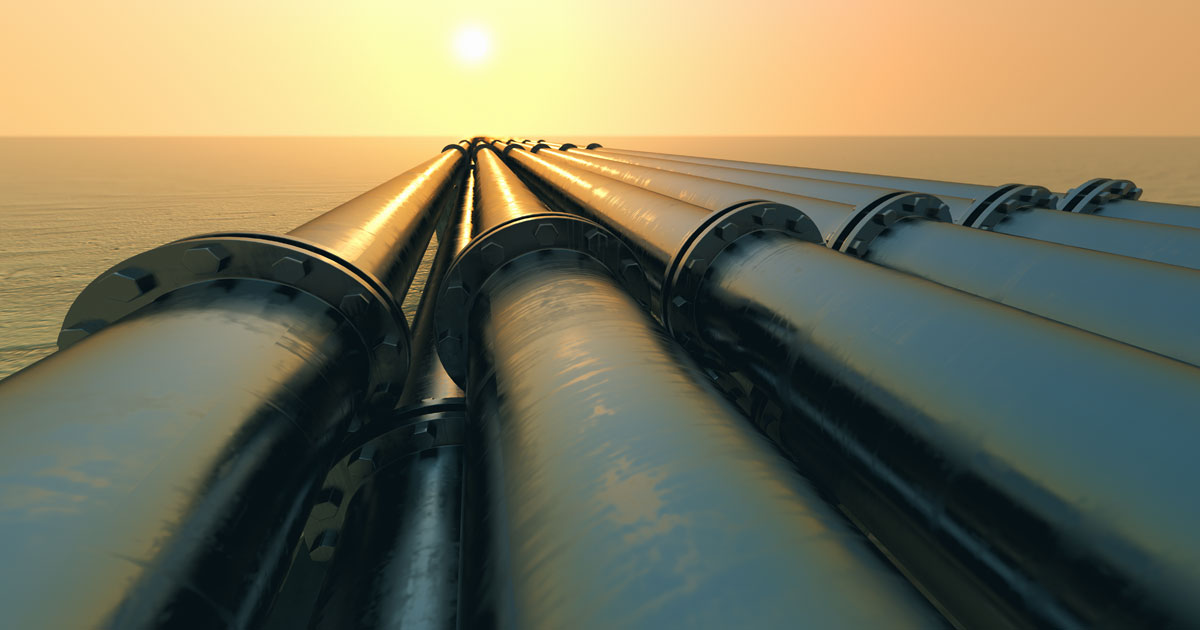
The oil and gas industry is a key driver of the global economy. It’s also at a long-term strategic crossroads. In this blog, we take a look at analysts’ opinions on key industry trends, and how these trends might drive the outlook for the industry as a whole.
Key Trends in the Oil and Gas Industry
- Volatile prices will continue to set the industry’s pace.
- A new push for operational efficiency will shape the industry
- The oil and gas industry is expanding investments in energy efficiency and sustainability.
Oil and Gas Industry Trend One: An Industry Paced by Volatile Prices
The last two decades have seen a rollercoaster for oil and gas industry prices. Today, energy prices typically track the global macroeconomy: a booming economy means more demand for oil and gas products. After a modest price-crash immediately following the 9/11 attacks, prices entered a seven-year boom, culminating in 2008. The 2008 financial crisis precipitated a dramatic price crash.
Prices began to recover alongside the global economy but did not retain their former heights before crashing again in 2014. The 2014 crash was caused by a combination of slowing demand growth in China, increasing supply from the North American shale oil/oil sands boom, and an accommodative production strategy from Saudi Arabia. Prices had only begun to recover when the COVID crisis caused another huge hit to global demand, this time pushing prices to an inflation-adjusted level not seen since 1998. Prices have since made a modest recovery, but the industry could be in for another volatile decade.
These prices have huge implications for industry structure because of how oil and gas production is uniquely stratified by production costs. This fact feeds into the next trend, explored below.
Oil and Gas Industry Trend Two: A New Push for Operational Efficiency Will Define The Industry
The price volatility discussed above will have a huge impact on the future of the industry. That’s because of how the oil and gas industry’s production costs vary based on the technical demands of extracting different types of deposits.
New technologies like hydraulic fracturing are making it possible to extract oil and gas from a vast new array of sites. These new extraction methods are more technically involved, however, and have higher costs of production. These increased costs mean a higher commodity price is necessary to break even for unconventional producers. And that these producers will continue to bear the brunt of downturns in oil and gas prices. According to Investopedia:
- Some shale oil wells have a break-even price point of $40 a barrel over their production life. But estimates for some wells range higher, from $60-90 a barrel.
- Conventional oil deposits can be extracted for dramatically cheaper rates. Saudia Arabia can produce at around $10/barrel, with other Middle Eastern and North African countries able to achieve $20 per barrel. Globally, $30 to $40 per barrel is typical for conventional extraction.
This cost bifurcation means that, with prices currently hovering around $40/barrel, many producers will remain on a knife’s edge of economic viability. Consequently, there is a huge push for more efficient unconventional production. Most unconventional extraction methods are relatively new, and there is hope to unlock considerable new efficiencies. Research by Deloitte, for example, suggests that operational improvements could improve well costs by 19-23 percent. They identify cooperation to realize greater efficiency both upstream and midstream as a key requirement to maximizing competitiveness for unconventional production.
We can expect a massive push to find every possible efficiency gain for unconventional producers. This challenge will include achieving every possible efficiency gain for key industry equipment (equipment that has to thrive in long periods of continuous high-temperature, high-pressure operation, often with minimal maintenance). We take a closer look at engineering challenges for key oil and gas equipment components (and how TriStar’s advanced materials can help) in our guide here.
Industry Trend Three: Investing in the Energy Transition
Maximizing efficiency is related to another long-term challenge for the oil and gas industry: climate change and the global push for alternative energy. Energy companies are not focused on denying this transition but investing to be ready for it.
The challenge of this adaptation is twofold. First, according to Deloitte, is the imperative that oil gas companies “need to figure out how to produce more oil and gas (and increasingly power) year after year while also being carbon-conscious and addressing stakeholders’ sustainability concerns.” Deloitte identifies potential avenues for less emissions-intensive energy extraction, including eliminating methane leaks, using renewable energy at field operations, exploring carbon recovery, and improving water use.
Second, oil and gas companies are investing to compete in an energy future that is expected to see peak demand for fossil fuels within the next 10-30 years. Reduced demand reinforces the imperative for efficient operation discussed above. It is also driving oil and gas companies to invest in technology, ranging from batteries to biofuels, that will help them stay competitive well into the future of the global energy market.
Oil and Gas Industry Outlook
Margins appear set to remain highly competitive for the foreseeable future (but may also be more stable as the global oil supply becomes less sensitive to geopolitical shocks). The push for more efficient production will continue to be a constant imperative, especially for unconventional extraction operations. And the entire industry will be innovating to position itself as a less carbon-intensive part of the economy, work which appears certain to continue throughout the century.
With these challenges in mind, the oil and gas industry continues to operate as a fundamental cog in the global economy and appears set to for the foreseeable future. Just as it has for the past century, the industry will continue to seek out new technologies and more efficient equipment in its quest to adapt.
Learning More
- You can read about the size and structure of the industry in our oil and gas industry overview blog post here.
- We highlight some fundamental oil and gas industry history in our blog post here.
The trends discussed here underpin a fact that’s proved true throughout history: the oil and gas industry’s continued success depends on continued advancements in technology and equipment. This reality appears certain to endure for the next century, at least.
From fracking engines, to pipelines, to refineries, critical margins depend on achieving every possible efficiency for business-critical equipment. To succeed, equipment components need to perform in the face of extreme heat, high pressure, and chronic exposure to corrosive chemicals. Key components need to stand up to these conditions while maintaining reliability during extremely long run times (many types of equipment are run 24/7/365).
TriStar’s self-lubricating polymers have proven themselves across a wide variety of oil /gas equipment. For a more focused look at challenges for oil / gas equipment components (and how the right materials can help) click on the button below to see our guide.
TriStar has deep experience working with oil/gas operators and OEM’s to identify solutions to these engineering challenges. Efficiency, safety, and reliability are all essential for oil and gas equipment, which is precisely why material selection matters. We bring a true consultative engineering approach to bear for every client. We take the time to understand their business and their equipment, spending time on-site if necessary. This knowledge is essential for the sort of smart material selection that can maximize ROI for critical components.
If you’d like to talk about your oil / gas component needs, contact our team using the button below.










